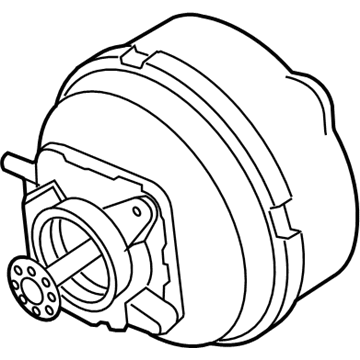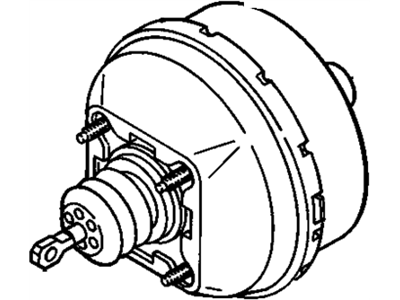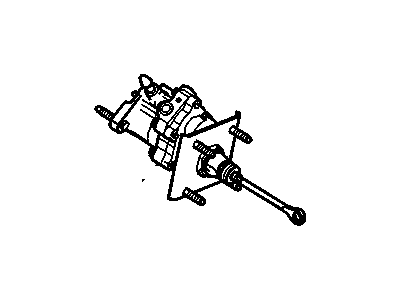
My Garage
My Account
Cart
Genuine Cadillac DTS Brake Booster
Brake Power Booster- Select Vehicle by Model
- Select Vehicle by VIN
Select Vehicle by Model
orMake
Model
Year
Select Vehicle by VIN
For the most accurate results, select vehicle by your VIN (Vehicle Identification Number).
4 Brake Boosters found
Cadillac DTS Brake Booster
The Cadillac DTS Brake Booster is a such part that has the function of decreasing the applied force to actuate the brake, improving driving's feel of the brakes. The vacuum booster operates through the use of a sealed chamber that is situated in the brake booster; this amplifies the hydraulic pressure coming from the master cylinder and applies the force exerted by the driver every time he or she steps on the brakes' pedal. There are two main types of boosters used in Cadillac DTS vehicles: vacuum-operated boosters as well as hydraulic boosters. Vacuum boosters work on the of engine vacuum and atmospheric pressure whereas hydraulic boosters work on hydraulic pressure for brake application. While these are usually effective, they sometimes can run into problems and need such replacement equipment like the vacuum pump, check valve, and filter among others. Moreover, the performance brake boosters and even the power brake conversion kit are also offered in the markets for those consumers who are interested and want to enhance their braking system of the car.
Each OEM Cadillac DTS Brake Booster we offer is competitively priced and comes with the assurance of the manufacturer's warranty for the part. Furthermore, we guarantee the speedy delivery of your orders right to your doorstep. Our hassle-free return policy is also in place for your peace of mind.
Cadillac DTS Brake Booster Parts Questions & Experts Answers
- Q: How to Inspect and Maintain the Brake System and brake Booster on Cadillac DTS?A:In addition to the specified intervals, the brakes should be inspected every time the wheels are removed or whenever a defect is suspected. Symptoms that could indicate a potential brake system defect include the vehicle pulling to one side when the brake pedal is depressed, squealing or dragging noises when the brakes are applied, excessive brake pedal travel, pulsating pedals, and brake fluid leaks, usually onto the inside of the tire or wheel. Begin by loosening the wheel lug nuts, then raise the vehicle and support it securely on jackstands before removing the wheels. Each caliper contains two pads (an outer and an inner) that are visible through inspection holes. Check the pad thickness by looking at each end of the caliper and through the inspection hole; if the lining material is less than the specified thickness, replace the pads, noting that the metal backing plate is not included in this measurement. If it is difficult to determine the exact thickness, or if there are concerns about the condition of the pads, remove the caliper(s) and inspect the pads further. Clean the pads with brake cleaner and re-measure them to determine how much friction material remains. Measure the disc thickness with a micrometer to ensure it has service life remaining; if any disc is thinner than the specified minimum thickness, replace it, and check for scoring, gouging, or burned spots, which may require resurfacing. Before reinstalling the wheels, check all brake lines and hoses for damage, wear, deformation, cracks, corrosion, leakage, bends, and twists, particularly near the rubber hoses at the calipers, ensuring all hoses and lines are clear of sharp edges, moving parts, and the exhaust system. If any issues are noted, repair, reroute, or replace the lines or fittings as necessary. To check the brake booster, sit in the driver's seat and perform a series of tests: with the brake fully depressed, start the engine and observe if the pedal moves down slightly; with the engine running, depress the brake pedal several times, ensuring the travel distance does not change; then, depress the brake, stop the engine, and hold the pedal in for about 30 seconds, checking that it neither sinks nor rises. Restart the engine, run it for about a minute, turn it off, and firmly depress the brake several times, noting that the pedal travel should decrease with each application. If the brakes do not operate as described, the brake booster has failed. For the parking brake, park the vehicle on a steep hill with the parking brake applied and the transaxle in Neutral, remaining in the vehicle for this check; if the parking brake cannot prevent the vehicle from rolling, it requires adjustment.





